News
Georgen Talks on Sheridan’s Japanese Community
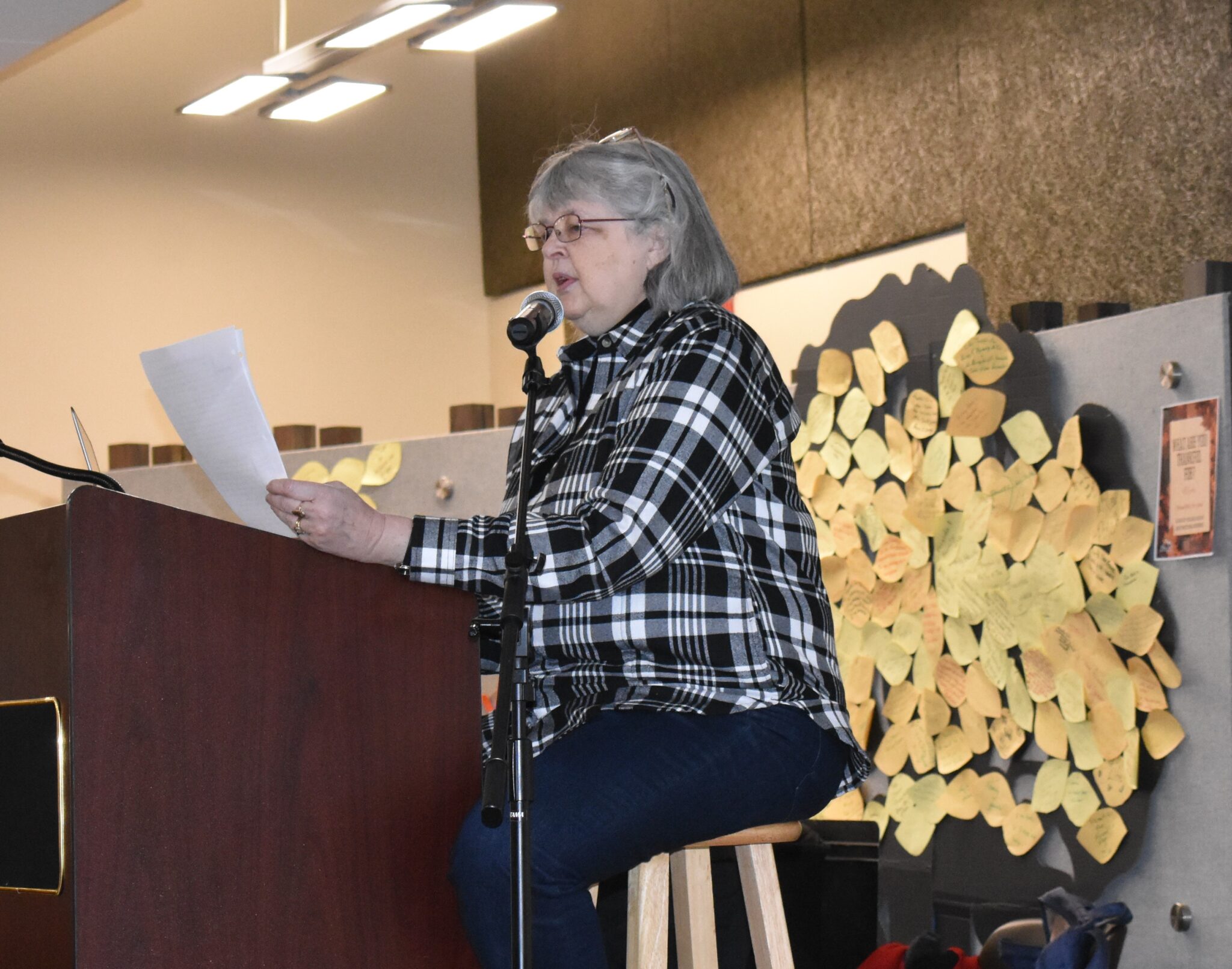
SCLT Explore History December program at the Hub on Smith on December 27 featured Cynde Georgen giving her talk, “Subjects of the Mikado – Sheridan’s Japanese Community 1900 to 1930.”
Georgen said her interest in the Japanese people in Sheridan began when she was a child.
She mentioned that the Sheridan area was once the home of many native American tribes. In the 1860s and 70s the white men began to make their mark in the area. Most people who settled here were of Northern European descent, who came to the area in latter part of 19th century. German and Scandinavian farmers took up farms around Sheridan and wealthy British and Scottish ranchers settled around Big Horn City.
When the railroad pushed west and north in the late 19th century and underground coal mines began production in the early 20th century, many immigrants from around the world came to the Western United States to find work.
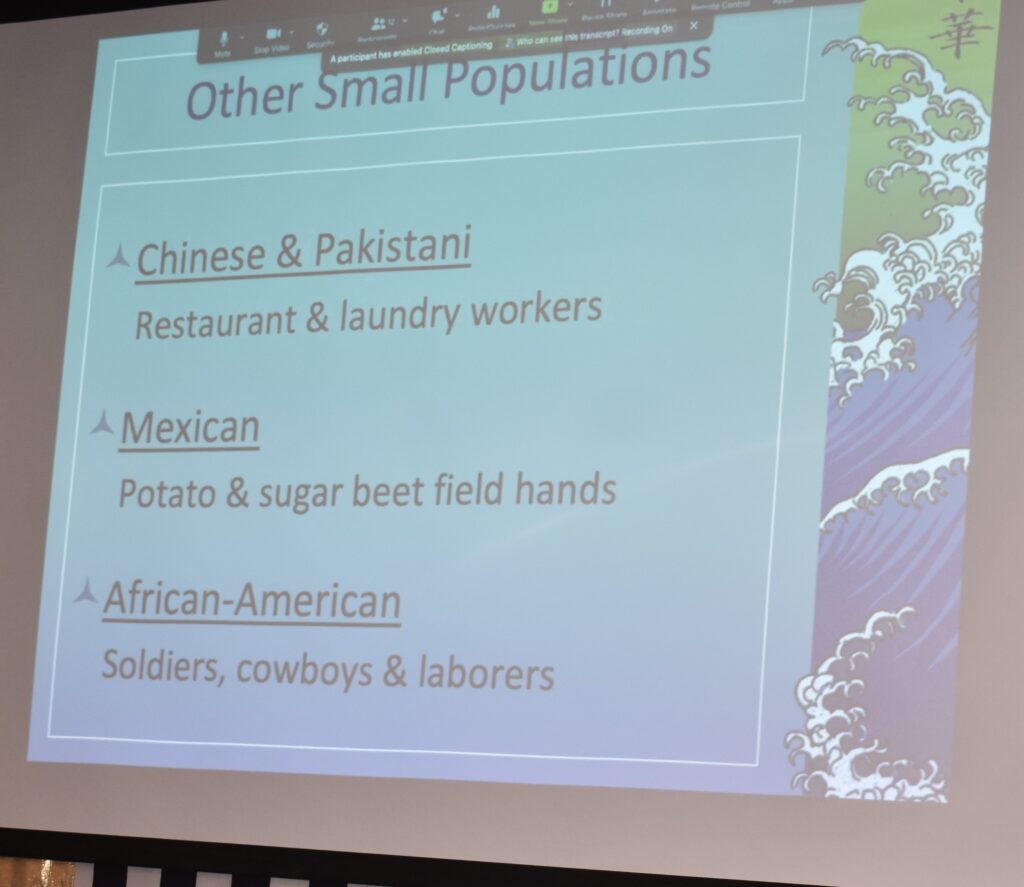
People from Czechoslovakia. Poland, Hungry, Russia and Italy came to work in the coal mines. Many Japanese came to the area to work on the CB&Q Railroad. Georgen said that there were a dozen or so Chinese and Pakistanis who opened restaurants and laundries. Mexican laborers came to work in the sugar beet and potato field. After the Civil War, African-Americans came west and worked on the railroads, as cowboys and many were buffalo soldiers at Fort Mackenzie and Fort McKinney.
According to the cenus records, before 1908, the number of Japanese residents in Sheridan could be counted on one hand. By 1910, there were around 80 men, women and children of Japanese descent who settled around Sheridan.
In the 1920s the population rapidly decreased. In researching this rapid decrease, Georgen said she had three questions. One, why did they come here? Two, what happened while they were here? And three, why did they leave.
At first, the Japanese came to Sheridan to work for CB&Q on the railroad gangs, laying track. They lived in the various small towns along the railroad. But why Sheridan?
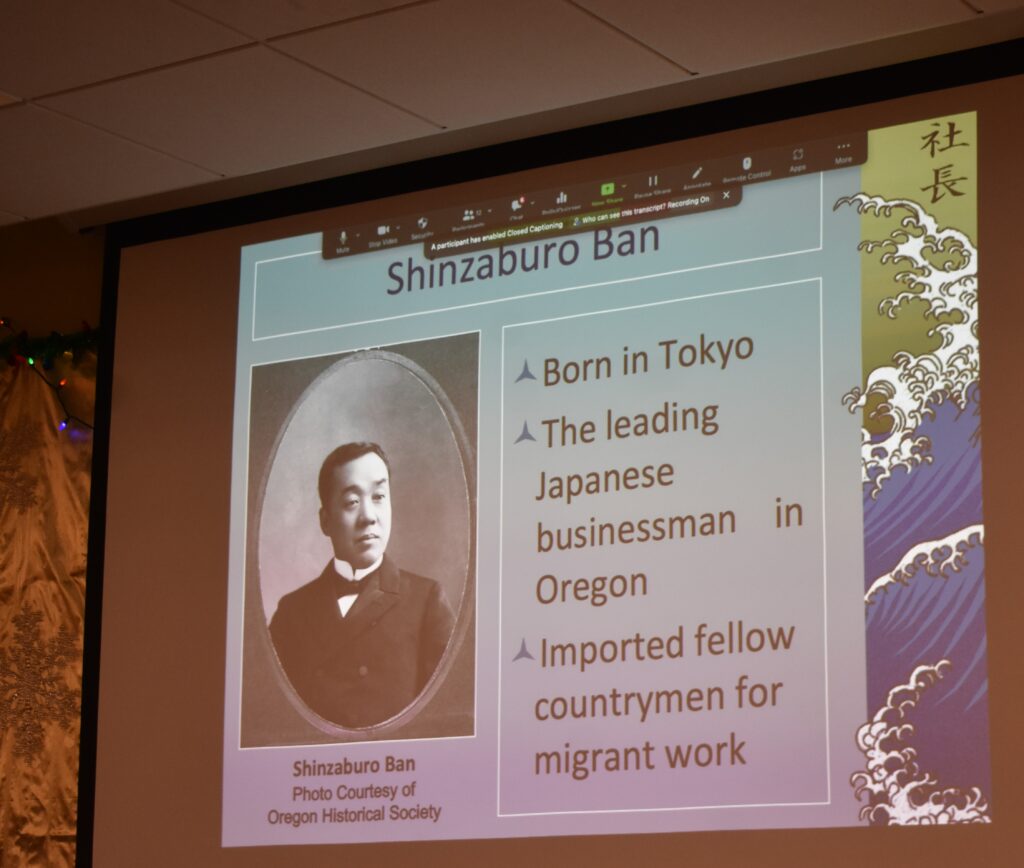
Shinzaburo Ban was born in Toyko and educated in both Japanese and English. He spent many years in the Japanese foreign service. He had a branch office in Sheridan. One reason he chose Sheridan as a place for Japanese workers was that the CB&Q was concentrated in the area at the time. The Ban company also imported such items as tea, silk and safety matches to sell in the area. The Ban company building was located in 900 block of N. Crook Street and housed the workers and provided storage for the oriental goods to be sold.
The Japanese contract workers were provided with medical care, Japanese food, and housing by the Ban company.
After the railroad was built, the coal mines needed workers. According to the Polk Directory, all but one of the Japanese listed as working in the mines were listed as, “Tipplemen” who worked the above ground tipples at the mines.
There were several reasons, many political, that caused the Japanese to move from the Sheridan area. So by 1920, the Ban company found it difficult to import more Japanese workers. Japanese were banned from owning land in many states.
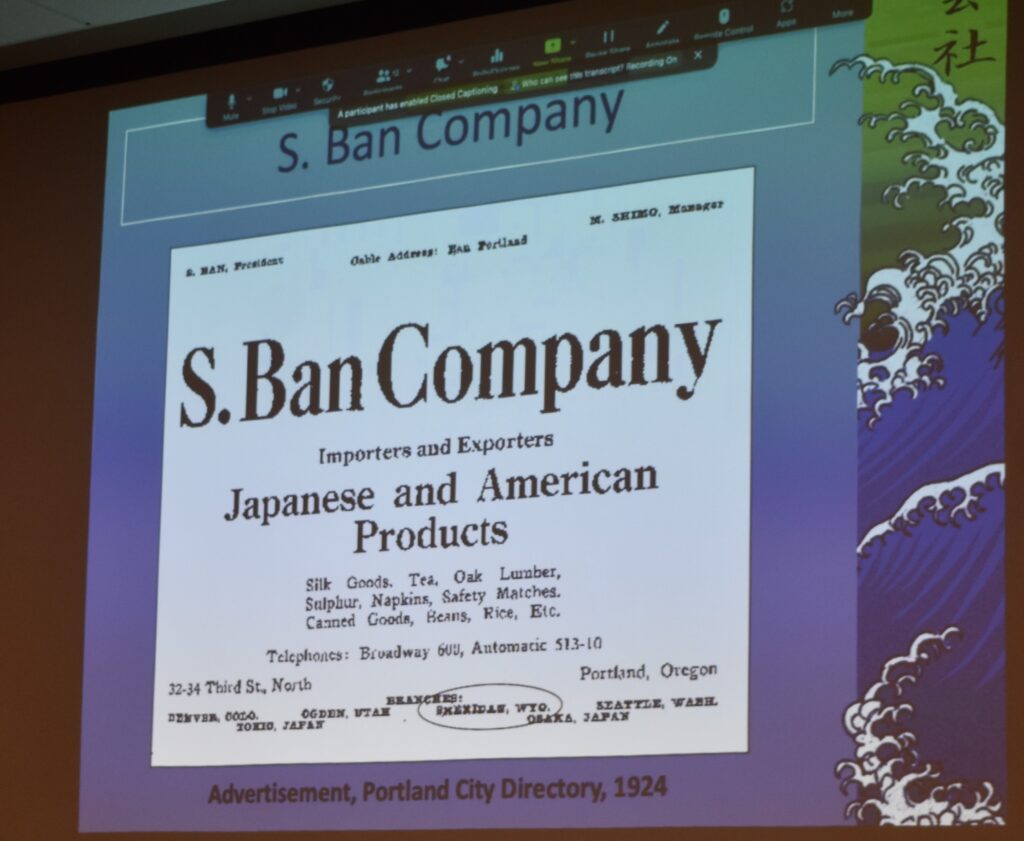
In 1911, Ban was the wealthiest Japanese man living outside of his native country. By 1924, due in large part to new laws, Ban was bankrupt. In 1926, he returned to Japan, where his only child died, and when Ban died, he was the last of the 13 generations of his family.
This was one cause for the decline of the Japanese population in Sheridan. Most of the Japanese left the Sheridan area, but a few remained here.
Those who did remain were often relegated to low paying, medial jobs, some signed on as porters for local businesses.
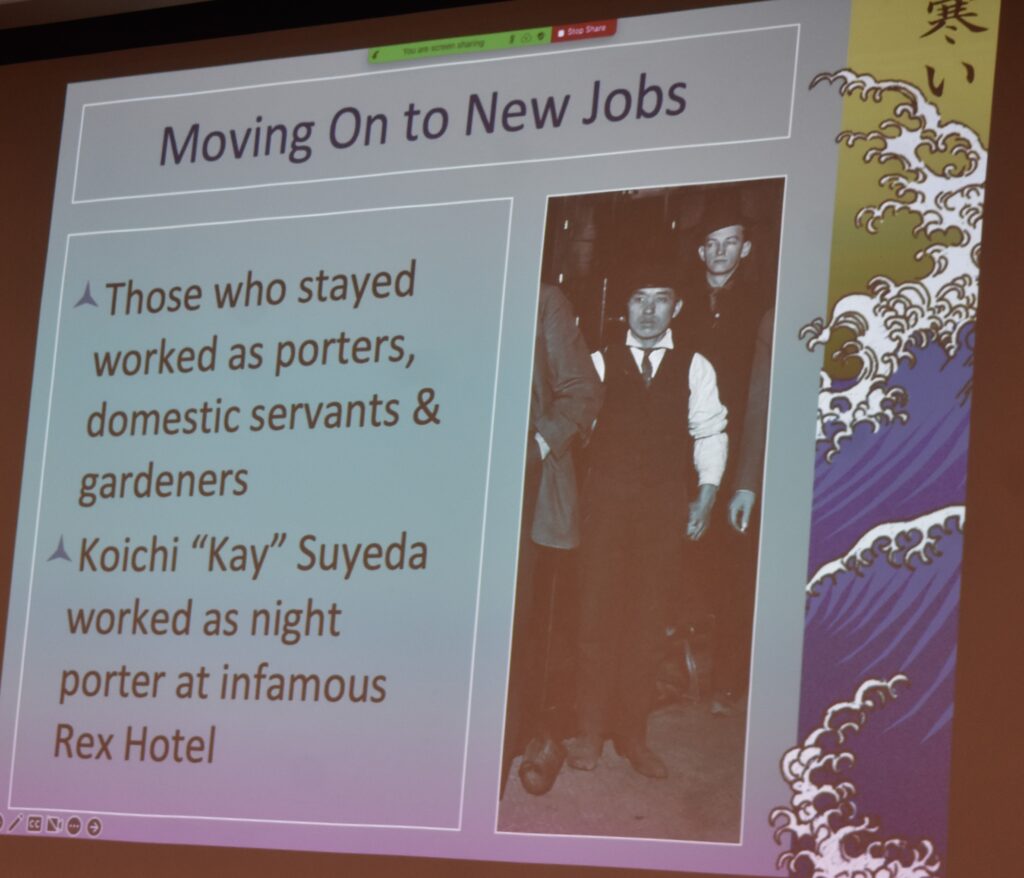
As for the lack of a coat, Georgen said he told an interviewer that a white man bet him a goodly amount of cash saying he couldn’t go through a Wyoming winter without a coat, so he did, and “Not only did he last one winter he lasted all the winters for the rest of his 96 years.” Georgen said.
Only four Japanese were listed as landowners in Sheridan county prior to 1930. They owned KN Gardens, along Big Goose Creek and raised vegetables to sell in the area. From 1906 to 1919 KN Gardens was known for it’s the quality of vegetables. In the 1917 their vegetables won prizes for red onions, table squash and turnips at the Wyoming State Fair.
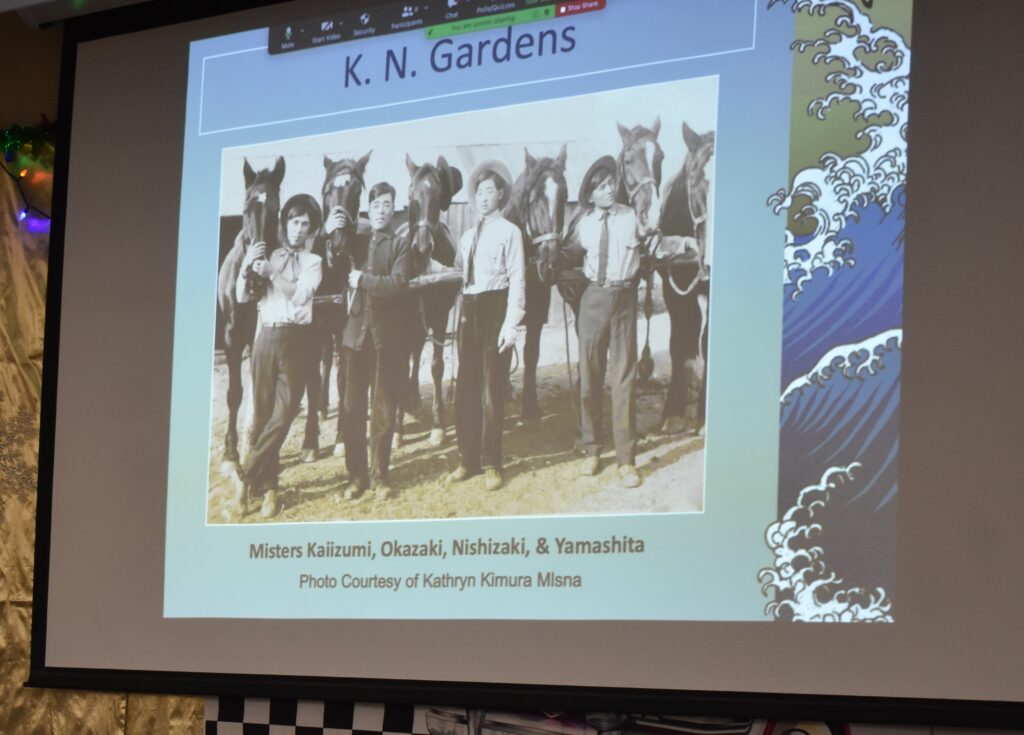
She also mentioned the very few mixed marriages that happened in the Sheridan area.
Georgen added that there were around 36 registered burials between 1903 and 1930 graves in the Sheridan cemetery of Japanese residents.

Today, there is little, other than mentions in the Polk Directories, memories and grave markers in the Sheridan cemetery, to remember the Japanese people who once lived and worked in the Sheridan area, but they made a contribution to our history.

